
Photography was still relatively new in 1861 as the Civil War began, but when America’s bloodiest conflict ended four years later, it had become possibly the most photographed event of the 19th century.
To assemble a collection of photographs of the Civil War, 24/7 Tempo reviewed historical archives from Getty Images and Wikimedia Commons. The scope of images ranges from horrifying to those chronicling the everyday life during the war.
Until photography captured what happened on the battlefield, the public’s knowledge of war was limited to written newspaper accounts and drawings. Actual images of the results of conflict changed the public’s perception of war forever. The photos of Civil War casualties were the shocking result of what some historians called the first modern war, because the Industrial Revolution had produced the machinery of death on an unprecedented scale.
Photographers Matthew Brady, Alexander Gardner, and George Barnard – among those whose work is represented here – formed a team to record images of the war. Besides shooting portraits of Union soldiers, President Abraham Lincoln on horseback, and officers weighing strategy in tents, they also photographed the war in all its hellish fury.
Click here to see 25 horrifying images of the Civil War
Their photos of dead soldiers on the battlefield in the aftermath of the Battle of Antietam in 1862 were shown at an exhibition in New York just a month after the battle, and shocked the public. One of the photos was chosen by Time magazine as one of the most influential images of all time. (Antietam was one of the most pivotal battles that made America what it is today.)
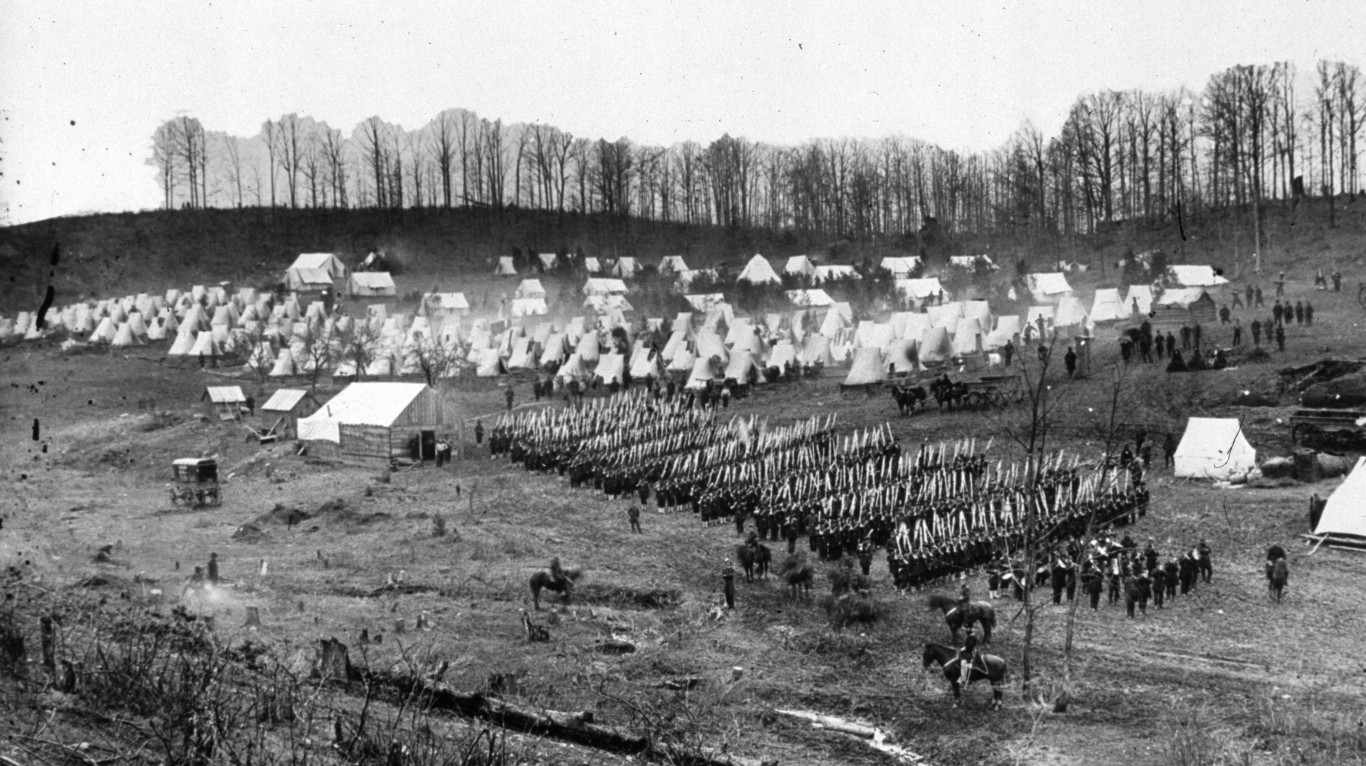
Union troops drilling
Troops of the 96th Regiment, Pennsylvania Infantry, drill at Camp Northumberland near Washington, D.C. Tasked with defending the nation’s capital until March 1862, they would later participate in the major battles of Antietam and Gettysburg, among other engagements.
[in-text-ad]

Field hospital
Wounded Union soldiers awaiting treatment at a Union field hospital at Savage Station, Virginia. The soldiers fought at the Battle of Savage Station in 1862 as part of the Seven Days Battles during the Peninsula Campaign.
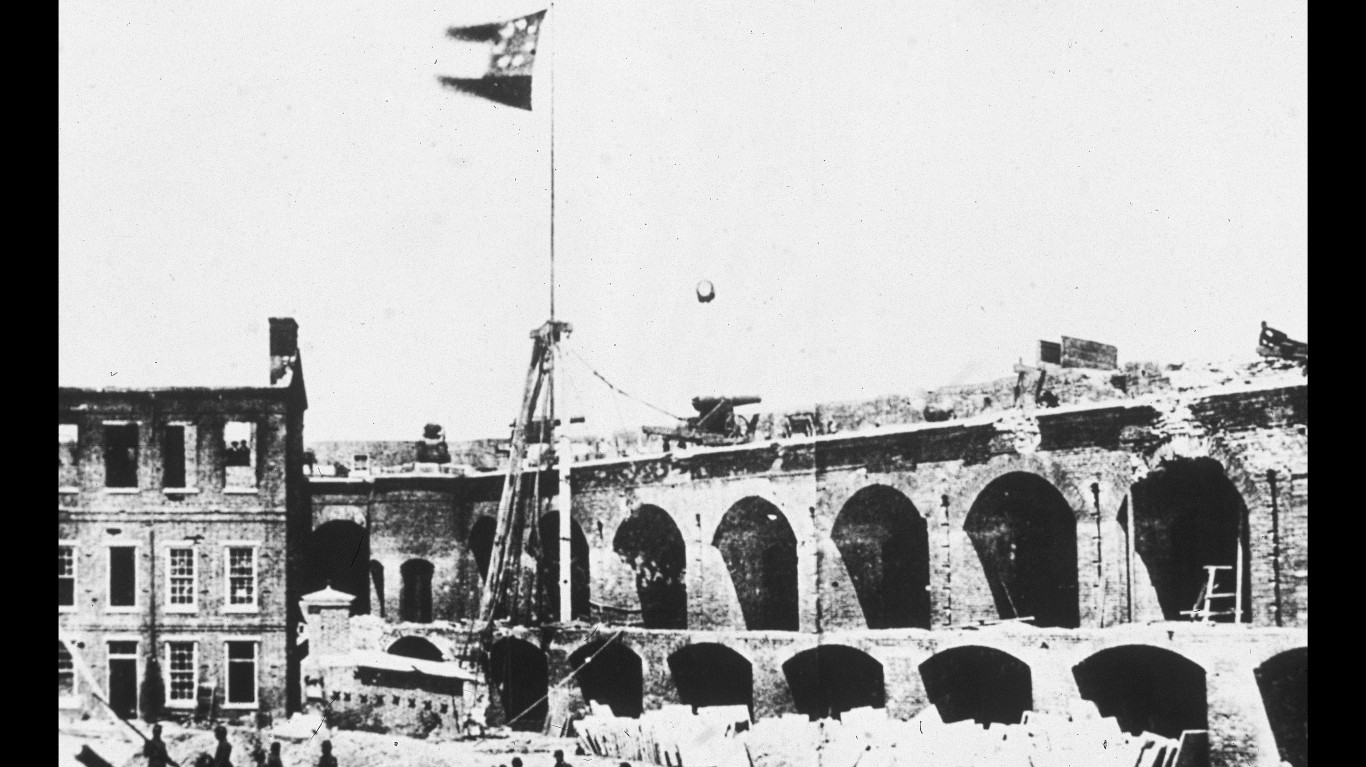
The Confederate flag over Fort Sumter
The First National Flag of the Confederacy – as opposed to the familiar X-crossed banner commonly called the Confederate flag – flies over this Union stronghold in Charleston Harbor after it surrendered to the Rebels following bombardment by the South Carolina Militia, in what are considered the first shots of the Civil War.

A Rebel bunker
Union troops occupying Confederate bunker defenses outside Atlanta, a vital transportation and manufacturing hub for the Rebels, circa 1863.
[in-text-ad-2]
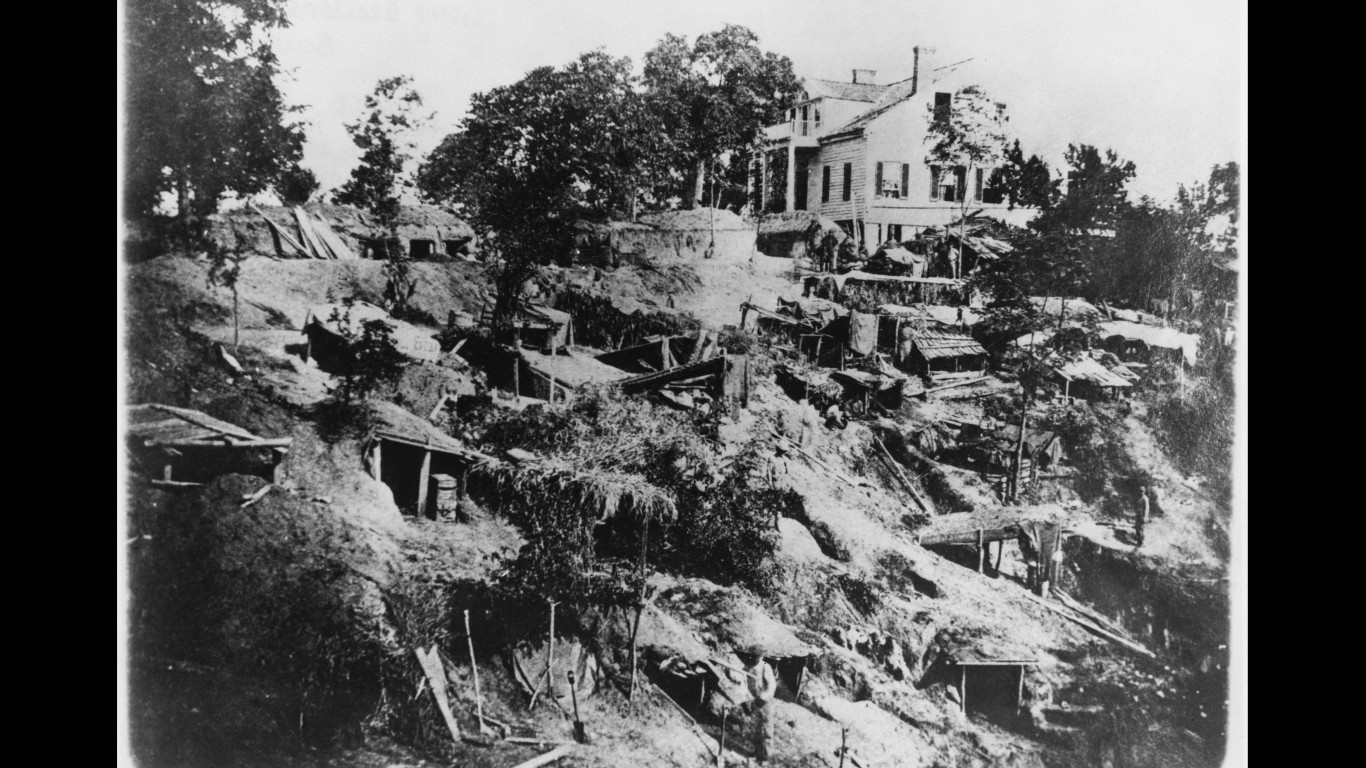
Union dugouts
The Union Army in fortified positions on a hillside during the siege of Vicksburg, Mississippi, in 1863.
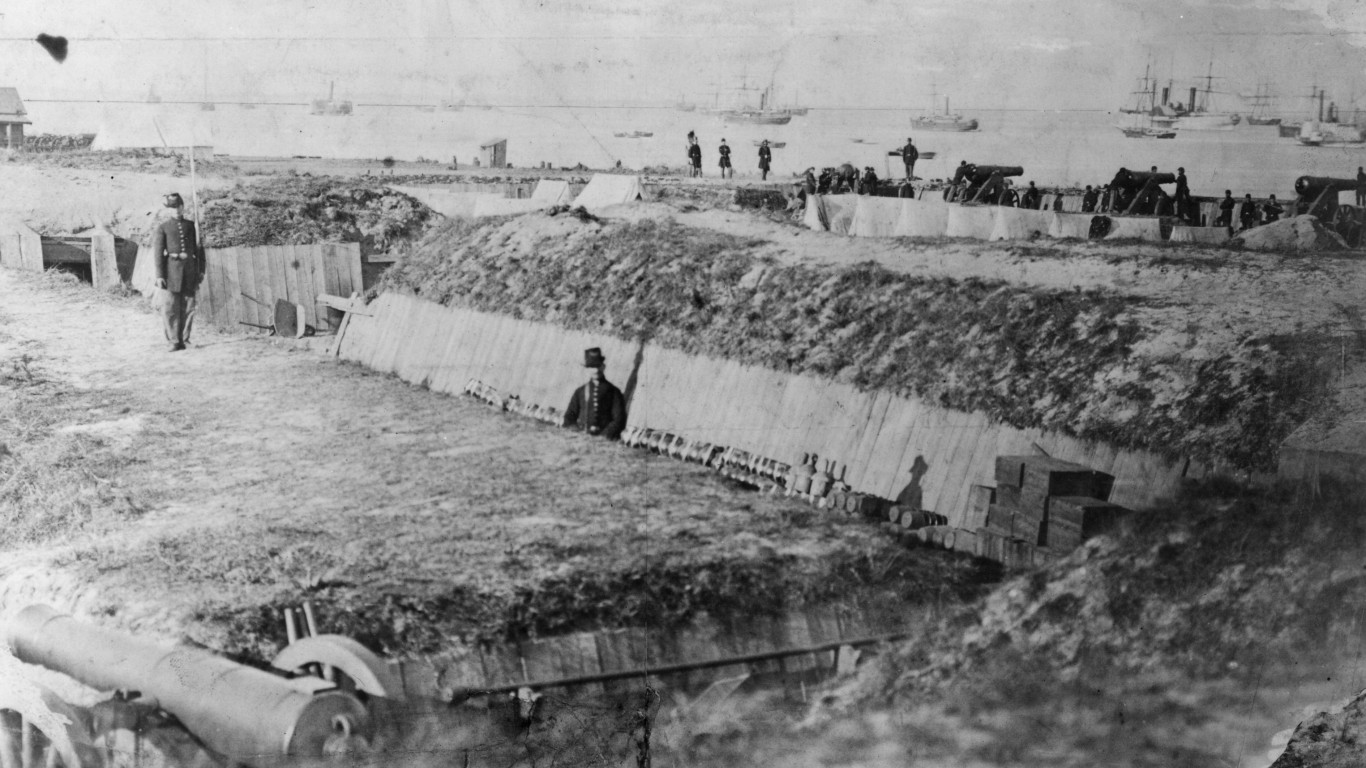
Standing guard
Confederate soldiers standing guard at Fort Walker on Hilton Head, South Carolina – a fort hastily built by slave labor in 1861 to guard the entrance to Port Royal Sound.
[in-text-ad]
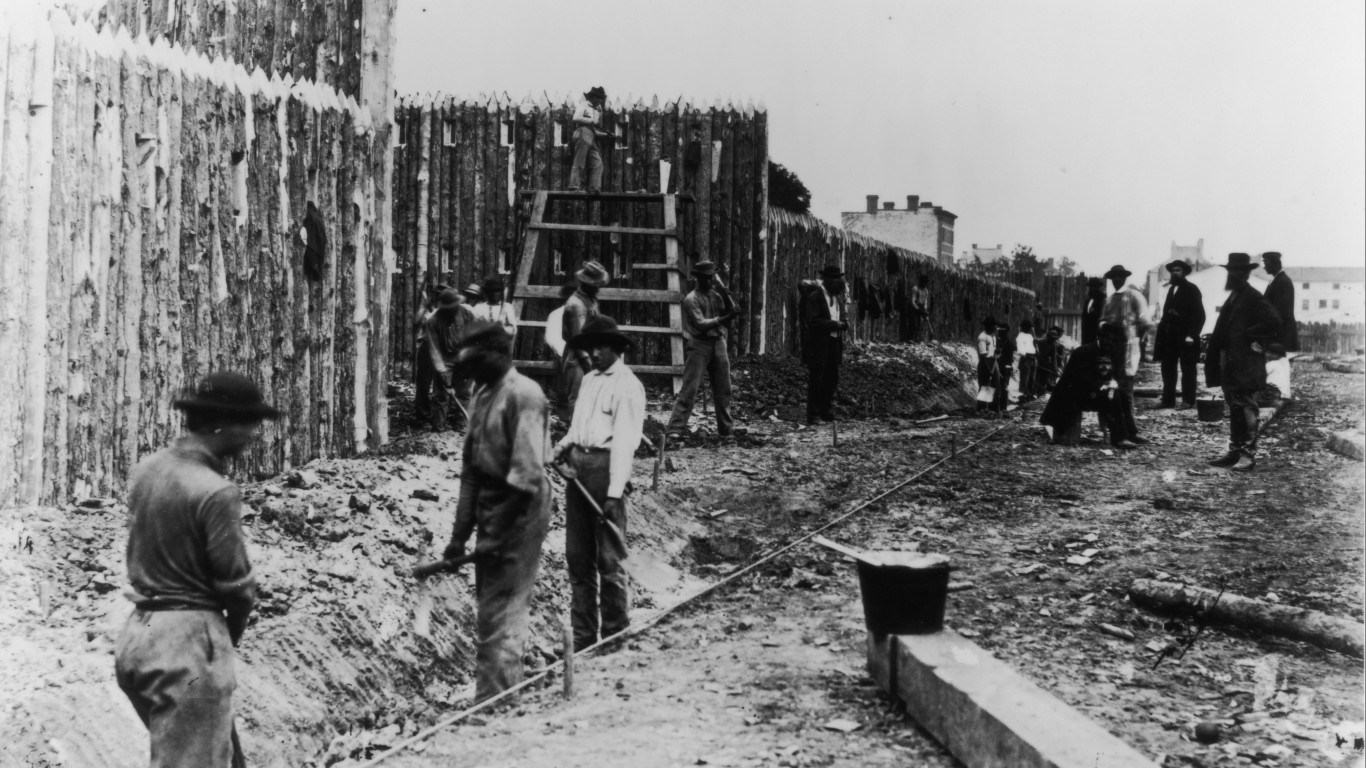
Working on a stockade
Black laborers digging a trench in front of a new stockade in Alexandria, Virginia, circa 1864 – possibly formerly enslaved men who’d fled there after the city was occupied by Union troops and found paid work.

Rebel fortifications
Defensive fortifications, including earthworks, established by the Confederacy in front of Atlanta in 1864, before General Sherman led his troops into the city.
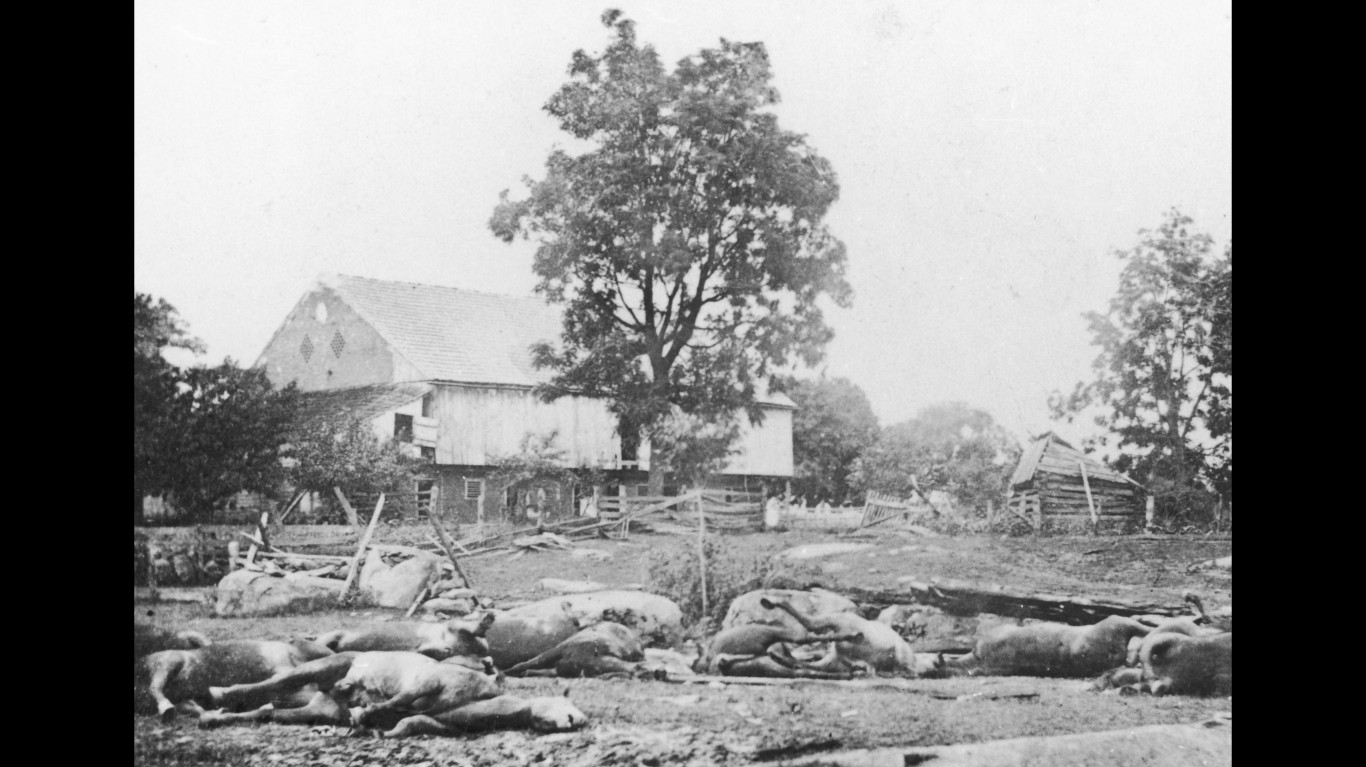
Dead horses at Gettysburg
Dead horses of Capt. John Bigelow’s 9th Massachusetts Battery lay where they died in the Battle of Gettysburg, in Pennsylvania on July 2, 1864.
[in-text-ad-2]
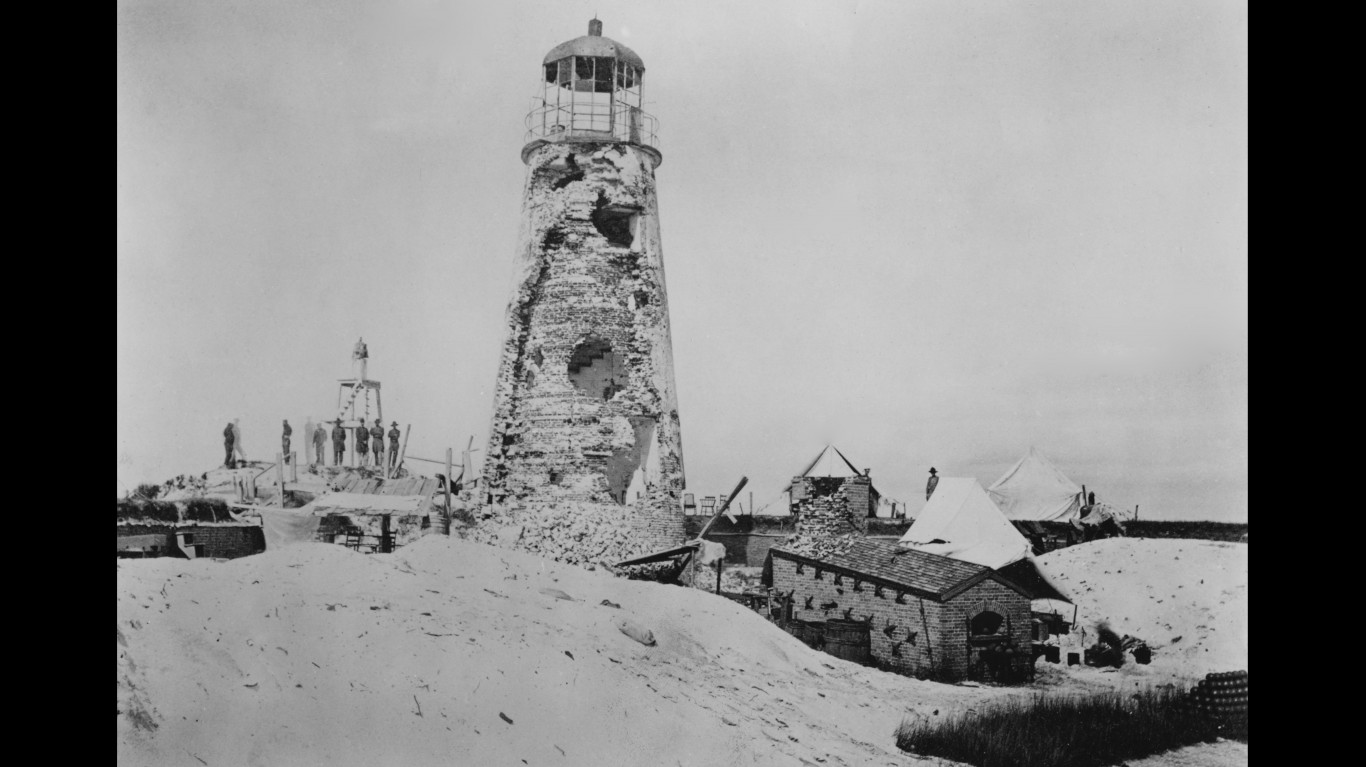
Damaged lighthouse
The ruins of a lighthouse in the aftermath of the Battle of Mobile Bay, Alabama, fought on August 5, 1864, and considered a major victory for the Union, since Mobile was the largest Southern port they captured after New Orleans.

Richmond in ruins
Burnt-out and demolished buildings in Richmond, Virginia, the capital of the Confederacy, in 1865.
[in-text-ad]
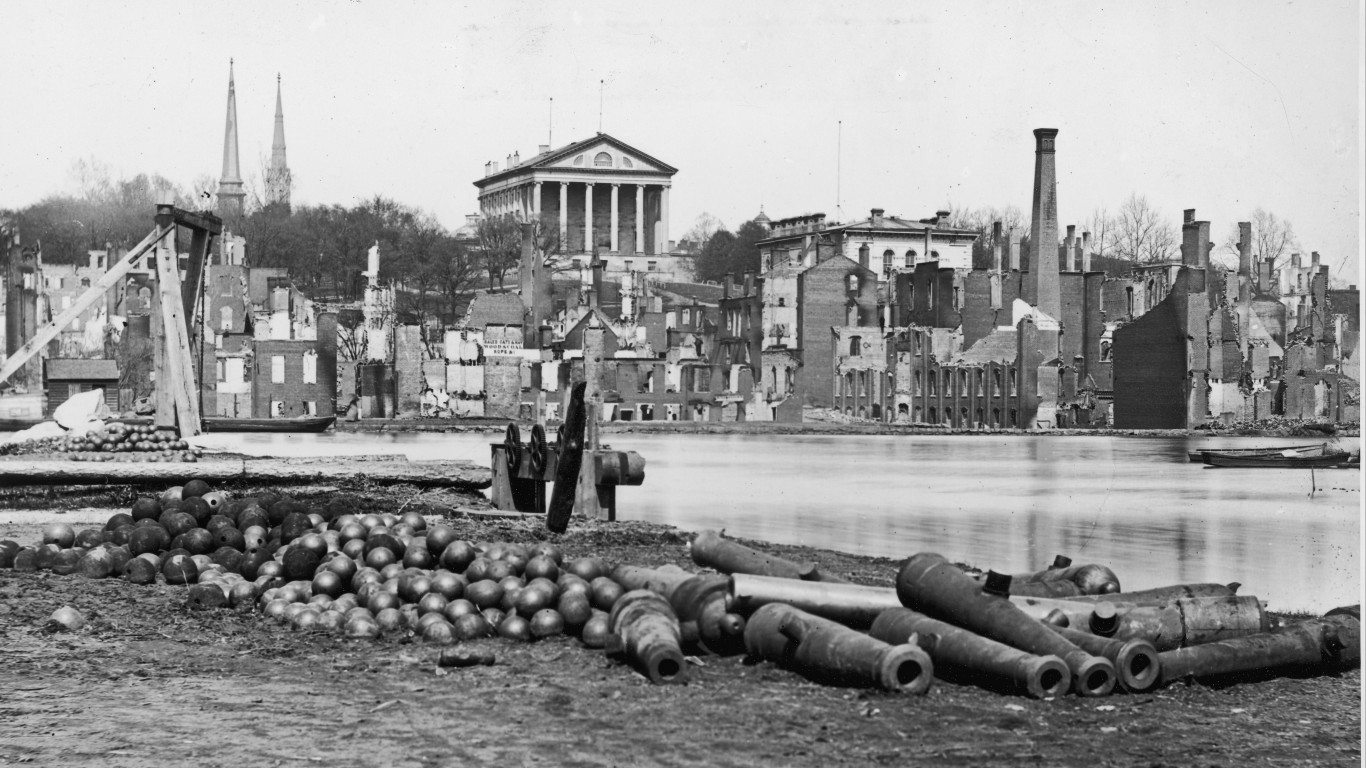
A view of Richmond
Unused cannons and cannonballs litter the ground on the banks of the James River in Richmond, Virginia, with the city showing signs of destruction in the background. (The intact neoclassical building in the background is the state capitol, designed by Thomas Jefferson and French architect Charles-Louis Clérisseau; it still stands.)

Hanging a Confederate war criminal
Heinrich (Henry) Wirz, who commanded the infamous Confederate prison camp in Andersonville, Georgia – in which nearly 13,000 Union soldiers died under horrific conditions – being hanged in Washington, D.C., on Nov, 10, 1865, for conspiracy and murder.

The Potomac Creek Bridge
The Potomac Creek Bridge in Stafford County, Virginia, built in nine days in May 1862 by Union troops under the supervision of engineer Herman Haupt – a photograph taken by legendary photographer Mathew Brady.
[in-text-ad-2]
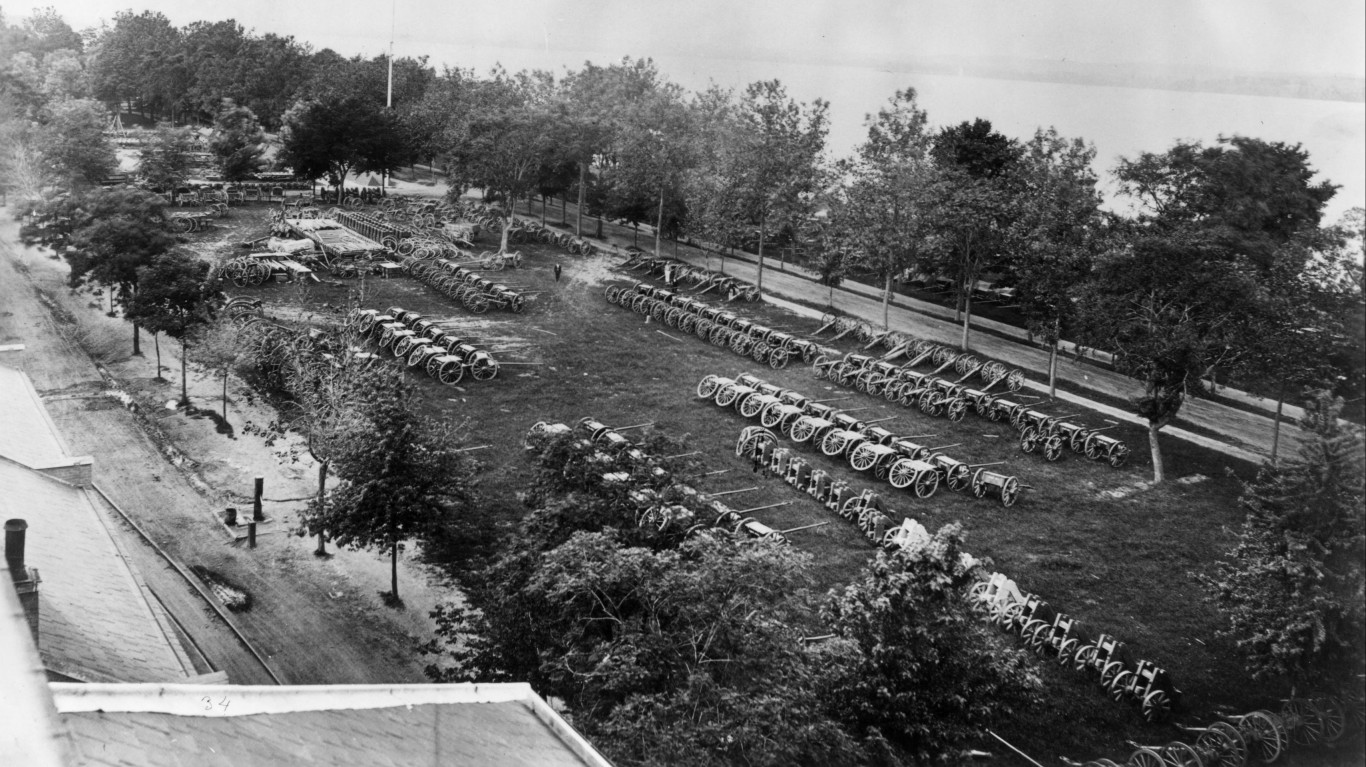
Washington Arsenal
Washington Arsenal – now Fort Lesley J. McNair – on Greenleaf Point, near the junction of the Anacostia River and the Washington Channel in the nation’s capital, circa 1861.

Slave cells
Two Union soldiers stand beside slave pen cells in Alexandria, Virginia – a major slave trafficking center before the Civil War and the first Southern city taken by Union troops, circa 1861.
[in-text-ad]

Battle of Fredericksburg
A Union Army battery makes final preparations on the day before the Battle of Fredericksburg in December 1862, which proved to be one of the most disastrous defeats for the Union during the Civil War.

A barracks turned prisoner of war camp
The onetime Camp Rathbun in Elmira, New York, which fell into disuse as a training center as the war progressed, and became a prison camp for captured Confederates in the summer of 1864.

Gettysburg casualties
A photo of slain Union soldiers following the Battle of Gettysburg in early April 1863, photographed by Timothy H. O’Sullivan and Alexander Gardner and titled “A Harvest of Death” – one of the most famous images taken during the war.
[in-text-ad-2]
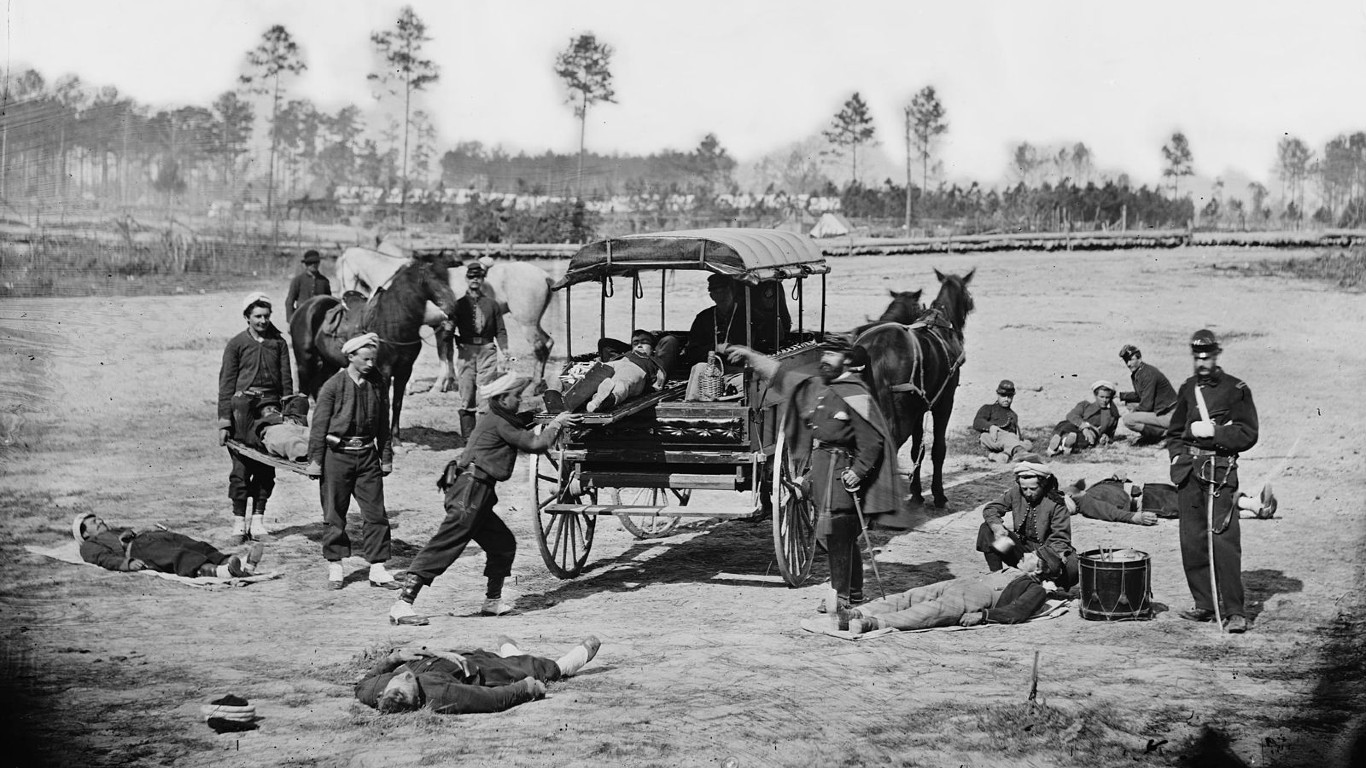
Civil War ambulance
An ambulance crew of American Zouaves – inspired by the French/North African fighting force of the same name – between 1862 and 1865.

A dead Confederate soldier
A dead Confederate soldier lies in a trench at Fort Mahone during the nine-month-long siege of Petersburg, Virginia, in the waning days of the Civil War – a siege that ended with a Union victory in March 1865 and enabled the fall of nearby Richmond.
[in-text-ad]

Bodies awaiting burial
Bodies await burial in front of the Dunker Church at Antietam, Maryland, after the Battle of Antietam on Sept. 17, 1862 – the single bloodiest day in American history, with more than 22,000 casualties.
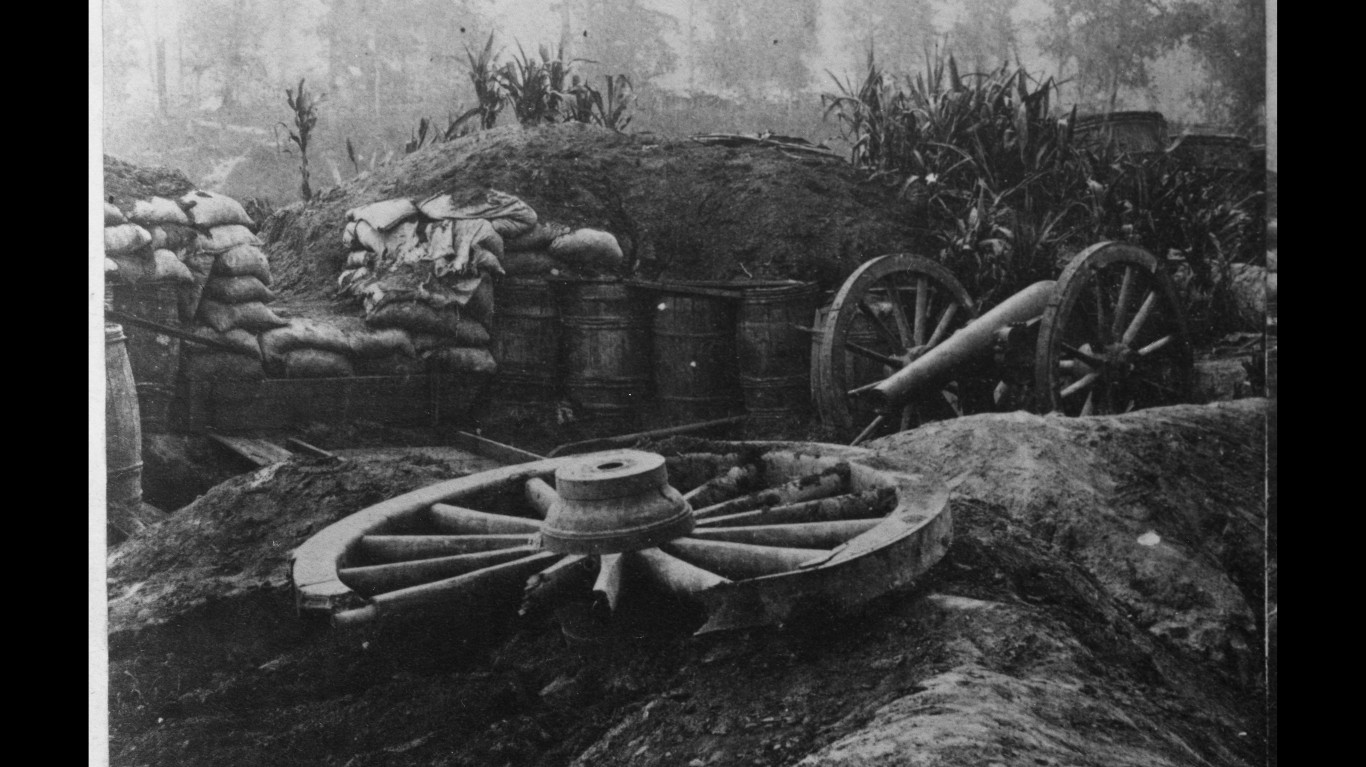
A broken cartwheel
A broken cartwheel with an abandoned cannon nearby on a battlefield, circa 1863.

The toll at Gettysburg
Dead soldiers piled up in a trench following fighting during the Battle of Gettysburg in July 1863.
[in-text-ad-2]

‘Rocks Could Not Save Him’
A staged photograph of a Confederate sharpshooter lying behind a pile of rocks at Devil’s Den, after the Battle of Gettysburg in July 1863.
Are You Ahead, or Behind on Retirement? (sponsor)
If you’re one of the over 4 Million Americans set to retire this year, you may want to pay attention.
Finding a financial advisor who puts your interest first can be the difference between a rich retirement and barely getting by, and today it’s easier than ever. SmartAsset’s free tool matches you with up to three fiduciary financial advisors that serve your area in minutes. Each advisor has been carefully vetted, and must act in your best interests. Start your search now.
Don’t waste another minute; get started right here and help your retirement dreams become a retirement reality.
Thank you for reading! Have some feedback for us?
Contact the 24/7 Wall St. editorial team.
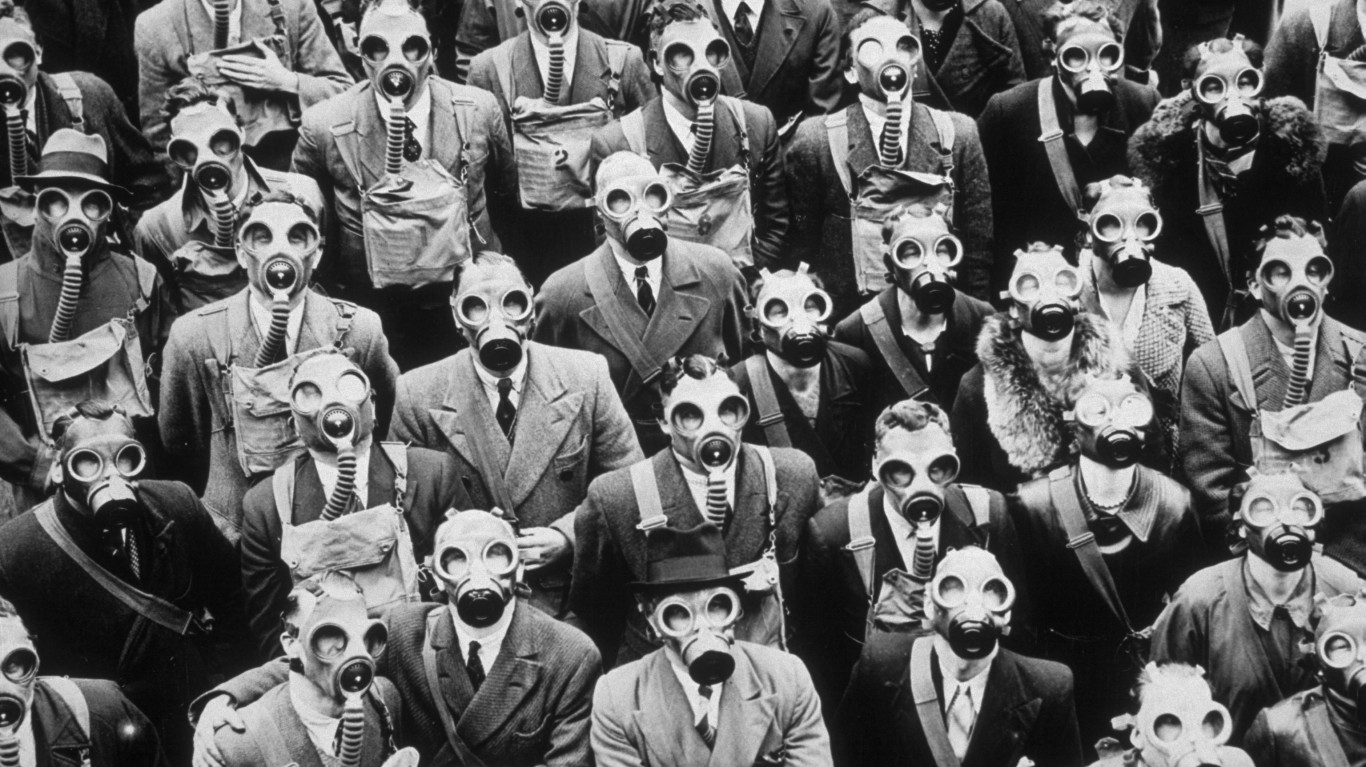 24/7 Wall St.
24/7 Wall St.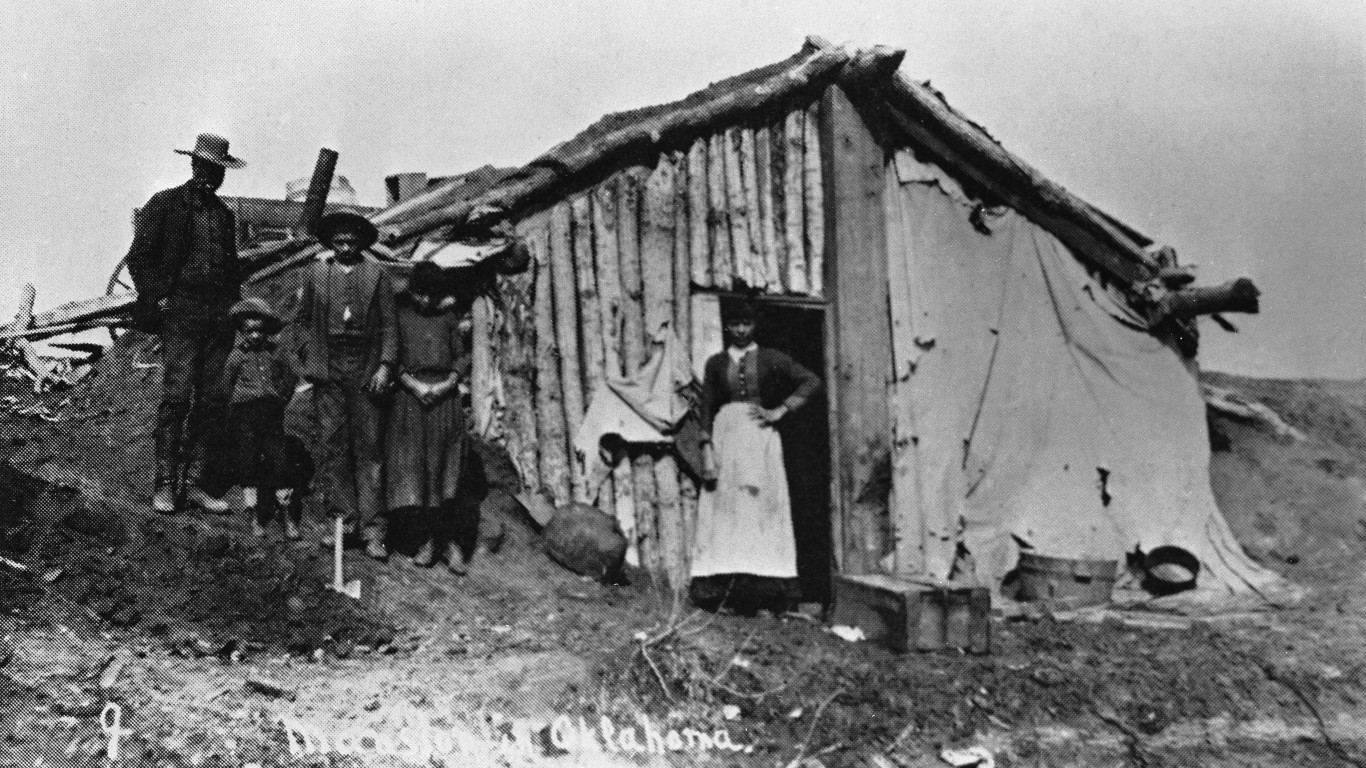 24/7 Wall St.
24/7 Wall St.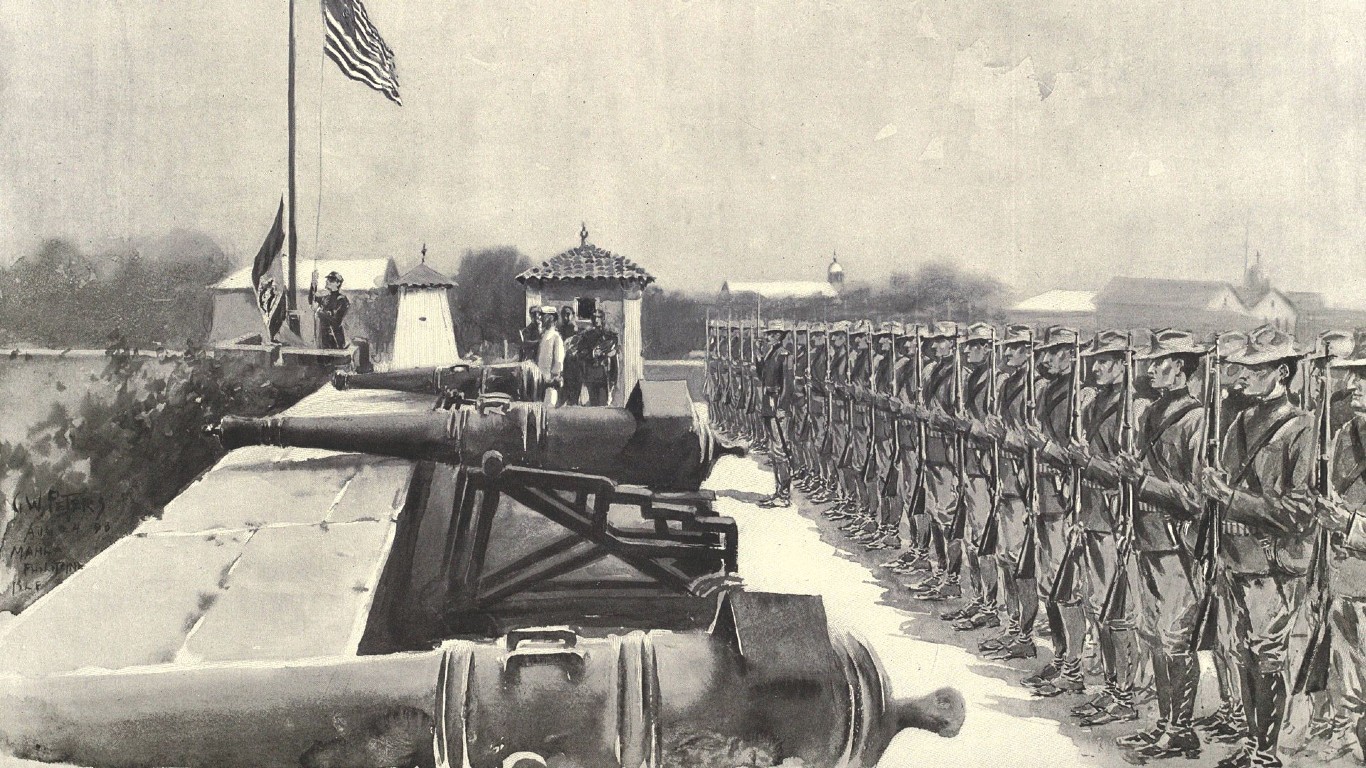 24/7 Wall St.
24/7 Wall St.